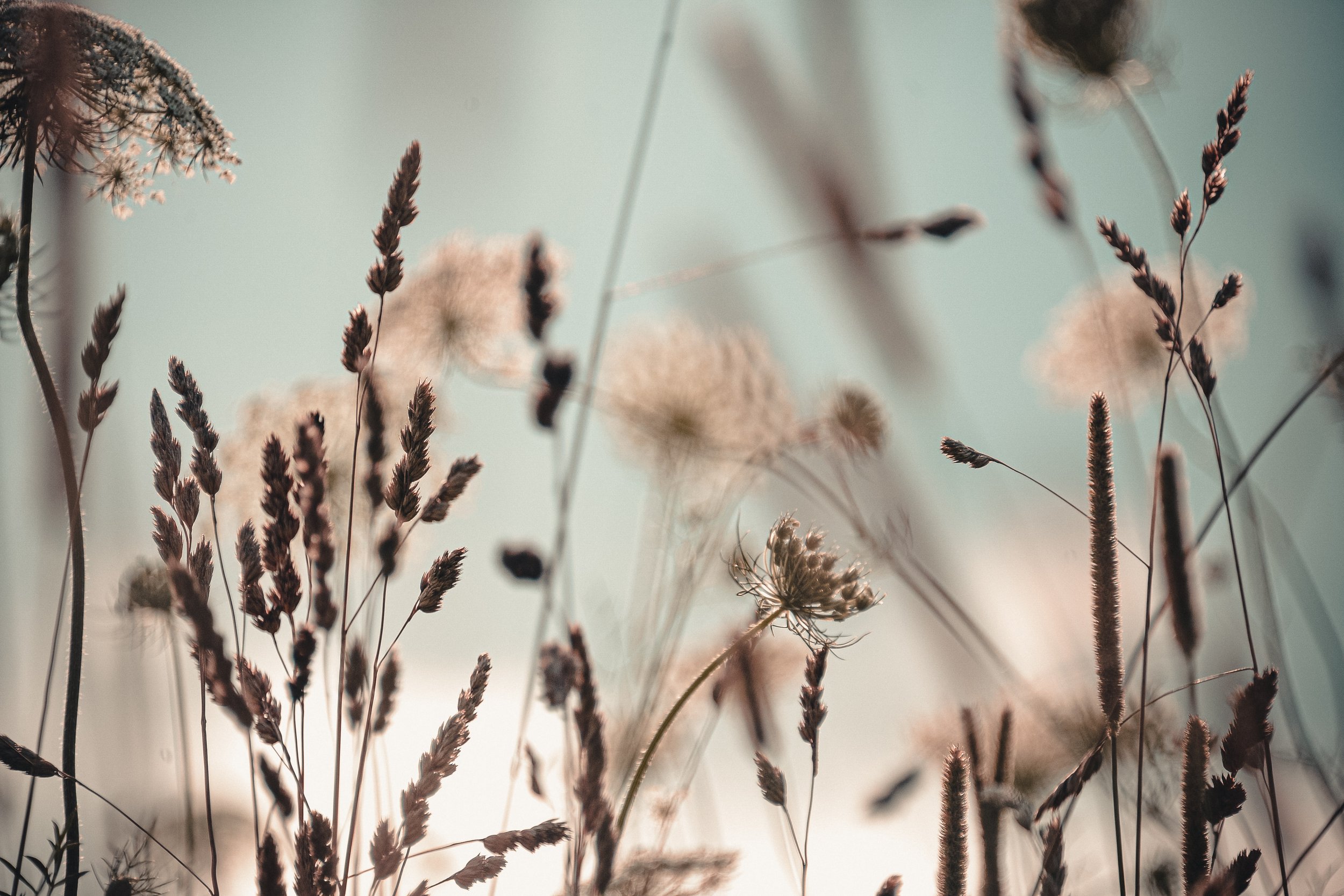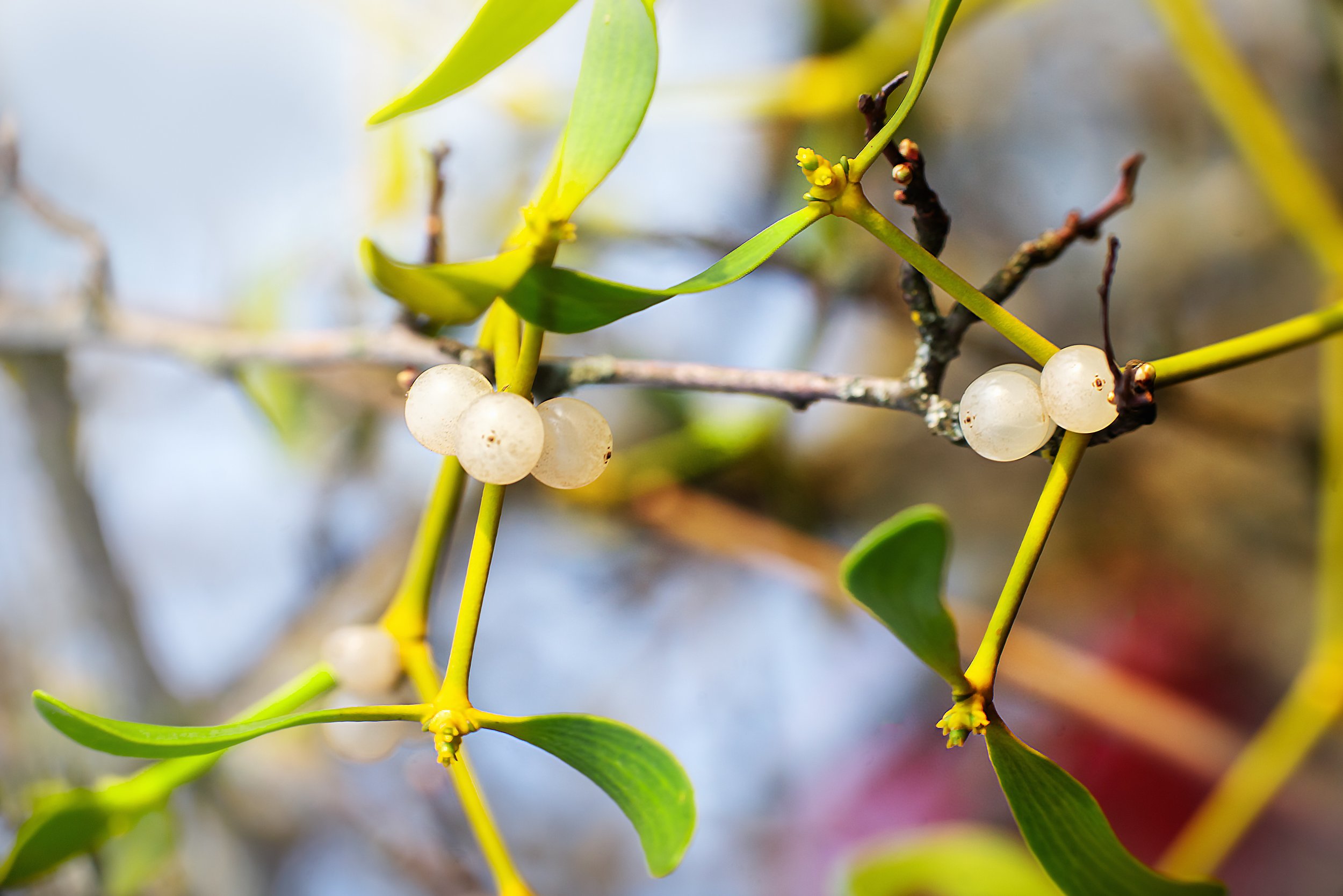Winter Flora
Words: Holly Westwood
Winter is here in full force. The darkest time of the year, when a glimmering candle gives you the warmth to get through the coldest of nights. The fog rolling off the misty hills descending into a sleeping valley below. The crisp frost waiting for a sparkling sun to break through and slowly melt off the bitter night. Tree limbs bracing themselves for a fast descending snow storm returning to reclaim their branches. A biting wind whipping your hair into a frenzy, leaving your cheeks ruddy and raw. Winter is beautiful, but winter is tough. Finding a way to get back to nature and connect with the earth at this time can make you appreciate the things that the cold takes away from the glowing summer. This month, we’re focusing on the natural connection we feel with the world around us through the herbal gifts each winter gives to us.
The hardy greenery that thrives through the frost has become emblematic of winter imagery. Healing, historic, aesthetic, the plants of winter have brought joy and merriment to our ancestors through this long season, while their properties do so much for us. Let’s explore the mythological origins and naturally healing powers of three famous winter flora.
Evergreens
Boughs of evergreens, especially pine, spruce, and fir, far pre-date the Christmas tree. When brought into homes, they were said to bring protection, fertility and good luck. Early Romans decorated their temples and homes with these fragrant plants during the celebration of Saturnalia, the holiday to honour Saturn, god of agriculture. Taking place from 17th to 23rd December, traditions included much merry-making and gift-giving, not too dissimilar to our current version of Christmas. They hoped the exchange would bring about a bountiful harvest the following year. Other evergreens were cherished at this time of year as a natural symbol of life amid the winter whiteness. Because of this, our ancestors brought them indoors as a promise that the world would once again turn green. The yule log began as a symbol of what was needed most at this time of year—light and warmth. It was usually made of oak (for the Oak King), ash, pine, or birch. At the end of the season, the log was burned and the ashes spread on fields to ensure their fertility in the spring. Might we suggest you do this with your own left over garlands this year as a holistic offering back to the land they came from.
Holly
Holly is a powerful plant, its leaves and berries reflect the light and add colour to the dark days of Yule. To the Christians, holly was adopted as the symbol of Christ’s crown of thorns, its berries representing his blood and its evergreen as a metaphor for life after death. To the followers of Norse Mythology, holly provided protection from lightning. The distinctive shape of its leaves, with the spine down the centre and dramatic points, has superstitiously been considered a lightning conductor. Because of this connection, people planted holly trees all around their homes to honour the gods of thunder, Thor and Taranis. Celtic mythology even has a Holly King. Tradition states that we live through the ongoing battle between the Holly King and his brother the Oak King who are in a constant struggle for power, each taking turns to rule half the year. The Holly King rules from summer until the winter solstice and commands power by wielding a holly bush as a club. Overall, holly is seen as protection and was traditionally brought into the home to act as protection from malevolent fairies. People believed that the holly provided shelter to the fairies and acted as a barrier between theirs and the human world to ease tensions between the two.
Holly is medicinal and heals. As well as healing things like coughs, colds, dizziness, not many people realise you can actually smoke holly. Yaupon Holly, found naturally in North America, was blended with other herbs and smoked by Native Americans for a variety of purposes. Yaupon smoked on its own is said to induce lucid dreaming. To go on a vision quest, Yaupon and Lobelia are a common mix. For modern smokers, a blend of Yaupon and CBD is a natural method to reduce anxiety and help the user fall asleep.
Mistletoe
Considered an aphrodisiac, mistletoe is a representation of the continuation of life even in the coldest winter months. Truly a plant of the world, it grows throughout Europe, North America, North Africa and Asia and does not belong to one culture or history. The Druids believed the evergreen plant symbolised peace and joy. They used golden sickles to cut the plant down for adorning their homes and for use in rituals of winter blessing. After the Norse Goddess of Love, Frigga, lost her son to a mistletoe arrow through the heart, she declared the plant would bring only love and not death from then on. More recently, during the Great Depression, Americans highly respected mistletoe for its persistence and stubbornness for remaining green throughout the great drought and cold winters. Beyond mythology, this plant is revered for its protection against evil, it was used as medicine for epilepsy, ulcers, mantra cramps and increase fertility. As a herbal remedy, it has been known to act as a stimulant and change blood pressure and heart rate, because of this mistletoe teas and extracts can be used as naturopathic healing agents. Native Americans have long used it as a therapeutic agent. The North American mistletoe was brewed into a liquid, and people suffering from headaches bathed their heads in the resulting tincture. Worth keeping in mind for a Christmas hangover cure.
For a herbal connection to winter this year, look to this ceremonial libation, a perfect winter tea created by food writer and forager Clare Knivett.
Brew a Mulled Apple and Chamomile Tea
This recipe includes ingredients of Apples - symbolising wisdom, love, immortality, earthly beauty and desire. Chamomile for new beginnings - great for letting go as you move past the Solstice and into a Capricorn New Moon. As well as Cinnamon for blessings, Nutmeg for prosperity, and Ginger for courage and power.
You will need:
Serves 2
250ml apple juice
1 cinnamon stick
1 Chamomile tea bag
2 slices of ginger
1 clove
2-3 grams of nutmeg
Place all the ingredients into a small pan over medium heat. Bring to the boil and allow to simmer for 10-15 mins until reduced slightly, take off the heat and allow to cool. Strain the tea through a sieve then share between 2 cups, top up with freshly boiled water and serve.
As you brew this tea, set your intention for what you want to move forward with after the Solstice and consider everything you have been grateful for these last few months, including any challenges you have moved past. This time of year is always considered to be a time to reflect and be grateful so make the brewing of this drink part of your ritual practice. These positive intentions will be the final ingredient of the tea you drink.
Before drinking, stir three times anticlockwise to let go of what no longer serves you and say the incantation:
I let go of what no longer serves me, I’m ready to embrace the change for I am powerful, strong and courageous, I deserve my life to be the way I want it to be.
To connect deeper to nature this winter, check out Clare’s foraging experiences set deep in the Malvern hills.





